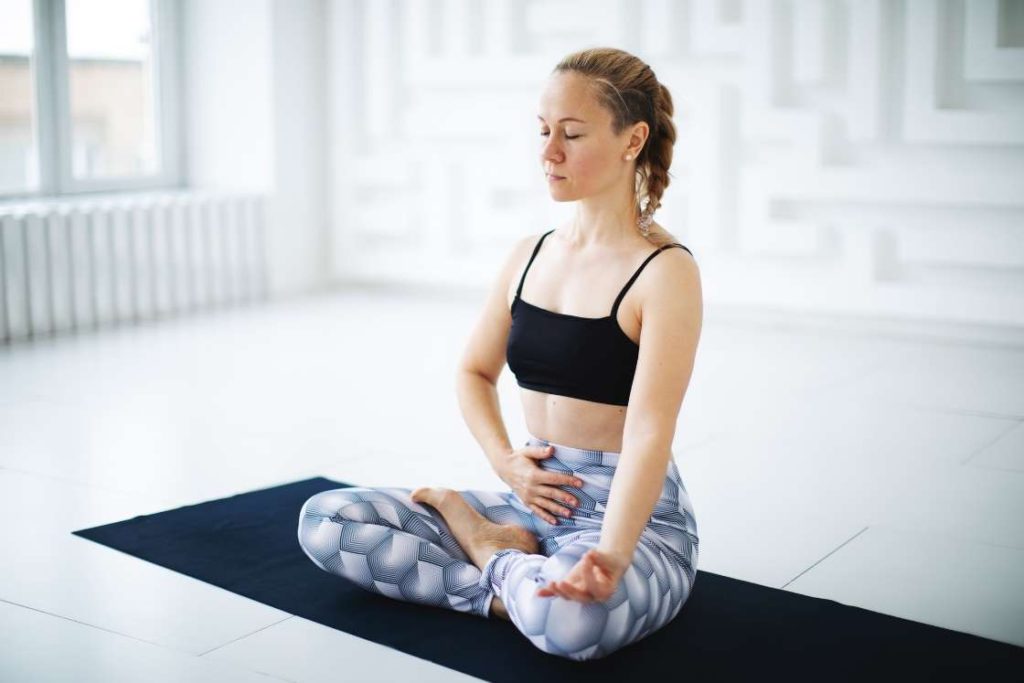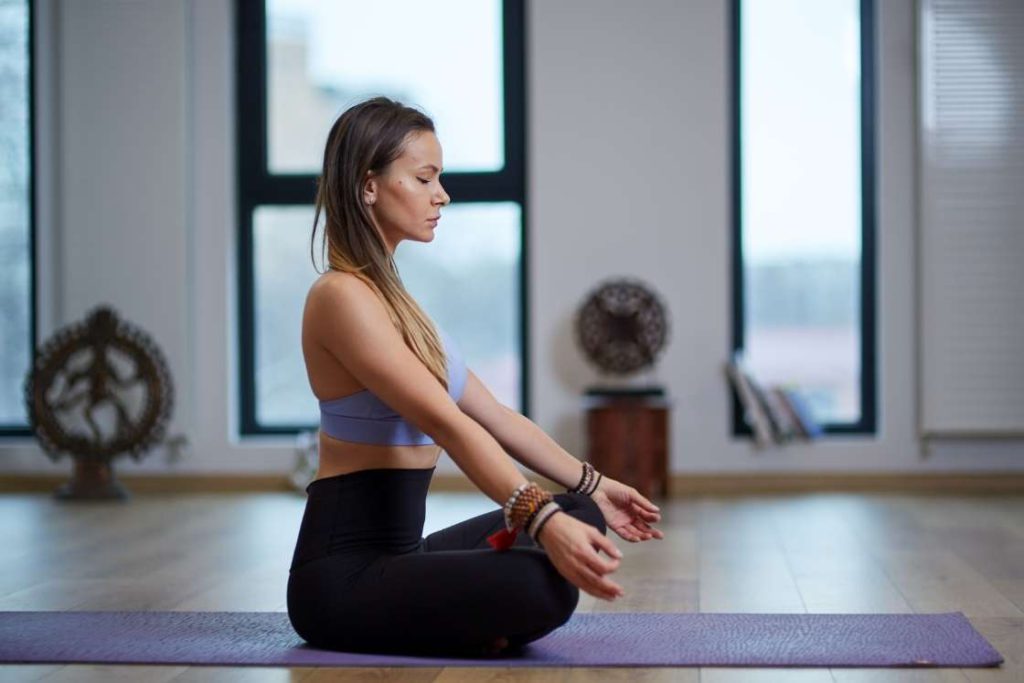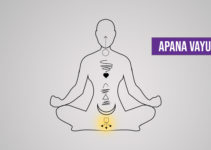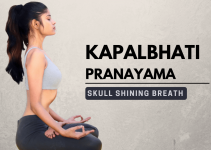
Pranayama practice involves much more than just knowing how to breathe in a certain way. In the various yoga tradition, It has been shown how the time of day, place, and length of breath in each practice can affect the whole pranayama session.
In order to get the most out of your yoga session, a practitioner first should learn some foundational concepts of pranayama breathing. Pranayama preparation might seem to you not directly impact the practical part of pranayama but in long run, it will definitely help you regularize pranayama breathing in daily life.
Why Preparation for Pranayama is important?
Our body have become accustomed to shallow breathing due to most of the changes in the daily lifestyle (considering myself and you, not experienced yogi). The quality of our breath automatically gets reduced because of shallow breathing. It makes us anxious, reduces the lung capacity, and can build up the amount of carbon dioxide in the body.
The importance of pranayama preparation comes in order to overcome the various bodily restrictions and make breathing calm & smooth.
1. To come out of habit of shallow breathing
The very first prerequisite of preparation for pranayama comes to get oneself out of the habit of shallow breathing. Shallow breathing affects your whole body and it may cause stress, neck pain, headaches, and an increased heart rate [efn_note] How shallow breathing affects your whole body https://www.headspace.com/blog/2017/08/15/shallow-breathing-whole-body/ [/efn_note].
In the first stage of pranayama preparation, a seeker is expected only to work on involving their complete respiratory system.
Understanding the topography of your body and observing the limitation in your natural breathing is a good approach to know the length of your breath. The best way to utilize the whole respiratory system organs is by Three-part breathing exercise or box breathing technique. In these breathing exercises, it’s emphasized to voluntarily fill all chambers of your lung (from lower below ribcage to top above chest). Then that air is held within the lungs for a few seconds. And finally, in exhalation, all lung chambers are empty one-by-one in opposite sequence to inhalation.
2. To know the posture and its relation with breath
It’s a very well known fact that your posture affects the breathing [efn_note] How Posture Affects Breathing https://www.acefitness.org/education-and-resources/lifestyle/blog/5716/how-posture-affects-breathing/ [/efn_note] but its opposite is also true that breathing affects the posture and so the overall health. The same applies to pranayama breathing practice; and this is the reason why Patanjali, the author of yoga sutras, placed Asanas (postures) before pranayama in the eight limbs system.
Pranayama postures, in contrast to normal postures, are active body position which allows body and muscles around chest function properly. It’s very important to be aware of your posture before pranayama to make sure there isn’t any hidden physical obstacle that comes in breath flow. Also, in dynamic postures where some movement comprises in between the poses (Vinyasa flow), breathing should be synchronized with the movements.
According to the spiritual head of the Himalayan Institute, Pandit Tigunait [efn_note] When to Practice Pranayama https://yogainternational.com/article/view/when-to-practice-pranayama [/efn_note], there are two purposes of establishing in asana before pranayama;
- Asanas revitalize our limbs and organs, especially the nervous system which when function properly ensures better flow of Prana
- And second, asanas awaken the dormant Prana which lies in our pranic sheath in normal conditions
3. To cleansing the internal organ system
If you will see the layout of chapters in Hatha Yoga Pradipika, you will found apart from asana, Shatkarma is another prerequisite for pranayama practice. Shatkarma is the set of 6 cleansing techniques used to clean the impurities of internal organ systems.
The practice of shatkarma before pranayama is important in the following manner;
- However, shatkarma is not the daily routine practice like asanas but it flushes out excess fat or mucus that blocks breath pathways. It ensures the obstacle-free movement of breath in a pranayama session.
- Also, internal cleansing by shatkarma techniques purify Nadis and balance doshas. It ensures quick awaken of pranamaya kosha (where Prana lies in a dormant state) on practicing breathing exercises.
Useful Guidelines To Go Through Pranayama Preparation

The preparation for pranayama includes all those general practices which deal with making a better environment for the body & mind internally and externally as well. Whether it’s a simple breath awareness work, knowing the time and place, or how long one should practice pranayama, all this is covered in “preparation for pranayama”.
With these points in mind, here are a few tips to get you through pranayama preparation!
1. Stay steady and relaxed
The entire body must be relaxed throughout the practice of pranayama. A steady posture without any strain helps in the easy flow of prana throughout the body. Therefore, assuming a calm and relaxed state of mind and body is a must to prepare yourself for pranayama.
2. Maintain the normal integrity of abdomen
Many beginners change the abdominal configuration while inhaling or exhaling. However, before stepping into pranayama, the importance of keeping the abdomen taut or neutral is a must. Contraction and expansion of the abdominal cavity while pranayama must not be followed except for some specific breathing practices.
3. Keep the spine erect in pranayama postures
There is a relationship between the spine and the respiratory system. In the astral body, the spine pathway is considered associated with Sushumna Nadi or the central channel through prana flows and passing all the seven chakras.
Maintaining spinal integrity also improves the alignment of the respiratory muscles. Besides these, an erect spine enhances the vital capacity of the lungs. However, losing the spinal integrity obstructs the flow of harmonized prana, thus, a rigid spine is the need of an hour while doing pranayama.
4. Practice it on a specific time always
Early morning hours, before the sunrise, (aka brahma-muhurta) when the mind is calm and oxygen level is the highest is considered the perfect time to practice pranayama. However, if your hectic schedule is not sparing those morning hours then, practicing it around sunset is also acceptable.
Consistency is more important than fixing the hours to practice pranayama. Therefore, dedicating a particular time as per your convenience during the day which you can dedicate a few minutes for your practice regularly to add will and interest is a must.
5. Diet intake
A gap of 3-4 hours is recommended before practicing pranayama. Only a yogic diet aka the Sattvic Diet is recommended for the practitioners of pranayama. It is soothing, nutritious, and improves the mind, along with keeping the weight in balance.
Having any meal before pranayama creates difficulty in breathing, however, hungry pangs must also not come in your way as a distraction while practicing pranayama.
Therefore, if you feel hungry before pranayama, then having some milk or yogurt will do.
When diet is wrong, medicine is of no use. When diet is correct, medicine is of no need.
Ayurvedic proverb
The same applies here, to gain all the possible benefits pranayama, a healthy vegetarian and balanced diet must be taken. Therefore, choose the diet keeping in mind that it is easily digested and keeps the abdomen clear.
6. Find a calm and uninterrupted space
Practicing pranayama requires a relaxed and ventilated space that has an influx of natural air. There must be a specifically dedicated space for this practice that is free of any interruption to gain stability in the mind and body that aids in the preparation for pranayama.
The second step is enhancing breath awareness, i.e. assessing the pattern of the natural breath.
The phases of breathing are exhalation, inhalation, and suspension.
Yoga Sutras of Patanjali
Observing them in space, time, and number, one can render
breathing more harmonious in duration and subtlety.
Along with synchronizing the breath the consciousness towards it is a must to ensure the smooth flow of prana while practicing pranayama.
7. Use of props in pranayama preparation
Props, as the name suggests are the helping aids that set aside the obstacles that one might go through while practicing pranayama. Most of these props are already known to you, especially, if you have mastered performing yoga asanas.
1. Yoga blanket
Yoga blankets composed of cotton, wool, or synthetic material serve as the basic props for pranayama. They are folded and stacked one over the other to sit on top of them while assuming any posture for pranayama.
This aids in lengthening the spine and aligns the torso which creates full space for full easy breaths, which is needed for pranayama. Hence, by improving the basic posture, the yoga blanket facilitates the pranayama practice.
2. Pranayama Bolster
A pranayama bolster is a skinny version of round bolsters. It is about thirty inches long, eight inches wide, and four inches in diameter. This is generally used while practicing pranayama in a supine position.
When a bolster is placed under the spine, it expands the chest, which increases the lung capacity to bring in more oxygen. It also enhances the belly breath along with the chest.
Alternatives for bolster are also available which include a rolled-up blanket. bath towel, firm pillow, or cushion. It can be used as an effective prop for the reclining pranayama practices.
3. Blocks
Yoga blocks are equally useful in pranayama as in attaining any asana. Especially, having a knee injury or any knee issues, then, sitting on the block comes in handy.
Besides this, using block and bolster in combination also serves as an effective prop for pranayama. For this, after lying on the bolster an extra block is placed under the head which creates Jalandhar bandha (throat lock). This is helpful in temporarily restricting the upward flow of prana, often used in practicing Kumbhaka (retention of breath).
4. Strap with a buckle
Fastening a strap around the back and around the sacrum is used in pranayama similar to asanas to keep the body alignment correct. It is made up of stiff cotton having a metal or plastic buckle in to adjust the tightness.
5. Sandbags
Sandbags are used as a comfortable weight placed on either upper abdomen, below the ribs. This produces resistance for the diaphragm which ultimately strengthen it.
The sandbags also works on improving passive stretches as lying in shavasana if you use a sandbag around your legs and over the wrists then it improves the abdominal stretching and opens the chest fully.
Besides delving into dep relaxing states, it improves the breathing hence, sandbags are also preparatory props for pranayama.
8. Prepare body with pranayama poses
Yoga poses are crucial for the preparation for pranayama. These help in maintaining the quiet and engaging body posture required for pranayama.
Specific yoga poses for pranayama regulates relaxation of the body, opening the chest, and lengthen the spine. All these conditions serve as a pre-requisite for pranayama. Hence, it is better to go through these preparatory poses for pranayama as mentioned below:
1. Reclining Bound Angle Pose (Supta Baddha Konasana)
It is performed lying on the floor relaxing the abdominal muscles. It is known for opening the chest that eventually allows the increased flow of oxygen by facilitating deep breathing. Thus, it helps in uplifting the pranayama practice.
2. Bridge Pose (Setu Bandha Sarvangasana)
Bridge pose is done by lying in supine position and balancing the entire body off the floor by keeping the arms, feet, and head on the floor. This stretches the chest, neck, spine, and also stimulates the lungs. Thus, Bridge Pose is also a preparation for pranayama practices due to improving the breath control.
3. Legs up the wall (Viparita Karani)
Since relaxation is considered as a foundation of pranayama, therefore, the relaxing pose like legs up the wall using props also comes in handy.
Stack two blankets so that while lying on the floor one edge of them lies under the sacrum while other end comes under the shoulder blades. Then, raise the arms into a cactus position opening your chest. This helps in relaxing the body and mind.
If you have assumed the pose the correct way then the abdomen itself descend below the lower ribs making a room for expanding the diaphragm. It eases the respiration by softening and steadying the breath which is inevitable for pranayama.
4. Reclining Hero Pose (Supta Virasana)
Reclining hero pose is practiced by lying on the supine position folding the legs near the buttocks and extending the arms overhead on the floor. It opens the chest and lengthens the spine.
It facilitates the smooth flow of prana through the sushumna nadi and chakras. Hence, this pose creates suitable conditioning for pranayama.
5. Corpse Pose (Shavasana)
Pranayama is a yogic practice that requires the practitioner to dive-inward and being fully aware of the body, mind, and breath. This requirement of the intra-vision only makes pranayama challenging than the asanas.
Since, pranayama is a time consuming practice that does not show immediate results which is in contrast with the asanas. Hence, relaxation, patience, and awareness are the key to attain pranayama. For this, Shavasana has got your back.
It acts as a threshold between the asana and pranayama and once the relaxation is reached via Shavasana, the next step draws you closer to your breath, says Dr. Geeta S. Iyengar. [efn_note] https://iymv.org/geeta-iyengar-pranayama/#:~:text=Often%20I%20feel%20that%20Savasana,contact%20with%20their%20inner%20energy. [/efn_note]
9. Nasal Wash
Nasal wash is an important step before practicing pranayama. Since pranayama is usually practiced in the morning hours when the sinuses are congested or blocked.
Therefore, using a neti pot to cleanse the blocked air passages is recommended. It includes rinsing the nasal passage filling the pot with warm water and salt and inserting the snout of the pot in each nostril one by one. This is known as Jala Neti.
It is an important method which makes pranayama practice more efficient.
Contraindications and precautions
Be cautious of the following points as a preparatory step for pranayama for avoiding any harm from pranayama practice.
- Skip practicing pranayama in case of cold or flu, or accompanying symptoms like headache, stuffed nose, stiffness, etc.
- A doctor’s consultation is required for practicing pranayama during pregnancy.
- Specific practices such as bhastrika and kapalbhati pranayama must be avoided if you are suffering from heart ailments, hernia, or high blood pressure.
- Patients with low blood pressure must also avoid sitkari pranyama.
- Agnisar pranayama is prohibited in case of hernia, high blood pressure, and after any stomach surgery.
- Always breathe through the nose, unless specified otherwise.
- Avoid making loud noises while inhaling and exhaling in pranayama.
Conclusion
Keep this practice guide and tips in mind next time you are planning a preparation for pranayama. Do not rush to get all the benefits in one go, just go slow and concentrate on your body and breath as specified in each pranayama practice.
Feel free to use props to effectively manifest an important limb of yoga, i.e. pranayama and revitalize your body and mind.
Frequently Asked Questions on Preparation for pranayama
Morning hours, generally before the sunrise, are considered the most suitable for pranayama. The practitioner must evacuate the bladder and cleanse the bowels before stepping towards pranayama.
Yes, it is important to practice pranayama before having any meal. Ensure that there is a gap of at least four hours between your meals and practicing time.
Several pranayama practices cools down the body, hence, it is recommended not to practice it in open with a windy weather. Also, it must be avoided in a moving vehicle.
It is important to maintain regularity while doing pranayama even if you are doing it for a short duration of 15 minutes. Hence, dedicating a fixed time from your daily routine is necessary to gain maximum benefits from pranayama. However, practicing it for a maximum of two hours is recommended.
Any meditative posture like padamasana, sidhasana, vajrasana, or sukhasana is perfect to practice pranayama. Sitting on a chair will also do if you are not able to sit comfortably in any of these poses. You just need to align the spine and head to practice pranayama for a smooth flow of prana.
Beginners must go for Dirgha pranayama aka 3-part breathing at first. It is easily practiced lying down with a thick blanket or sandbag on the belly.




